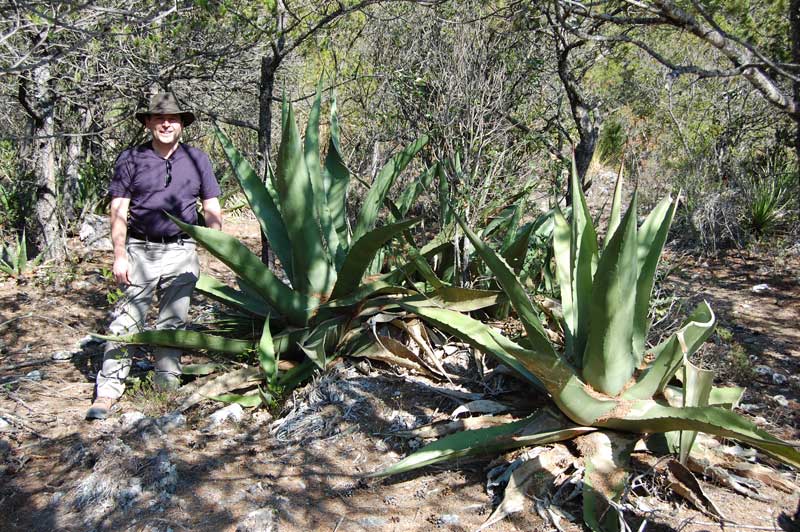
Adventures in Mexico pt III
Thursday 18th January
Only a few km travelling to reach the start of today's adventure, which was to see us driving up into the mountains from La Peņa then back down and around to Miquihuana (Mick-ee-WAH-nah). I was excited as I knew what to expect and really looked forward to seeing Neil and Phil's reaction. So off we went, quickly gaining altitude. We passed the, by now, usual stands of Nolina nelsonii, Dasylirion quadrangulatum, Brahea decumbens, Yucca filifera and Y. carnerosana on the lower open slopes until, around 2200m, the vegetation changes and woodland starts to creep in. It never ceases to amaze me about this almost upside down transition - expecting the higher ground to be devoid of plants - yet we were soon driving through a thick pine forest. Anyway, at or around 2300m we started to see Agave gentryi growing mainly in the shade of the woods.

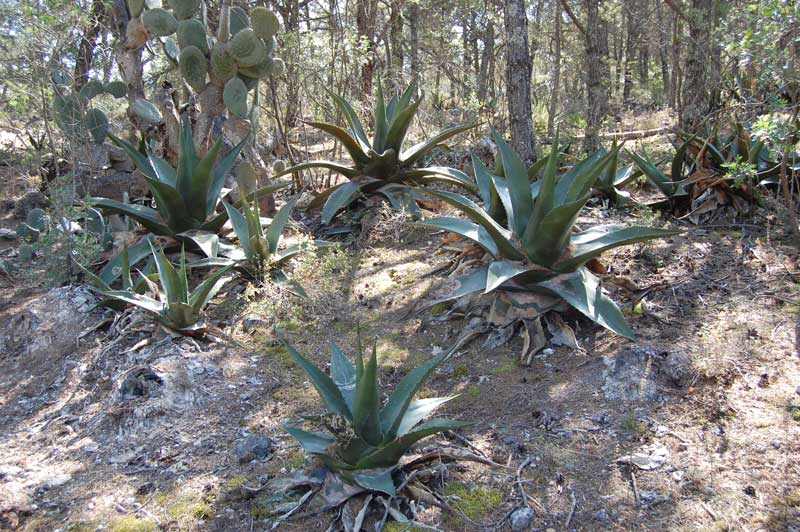
Then, as we gained altitude, we started to see Agave montana appear - the main reason for driving up here, this magnificent agave never fails to take my breath away. Below is a conveniently staged picture showing small plants of Agave gentryi and Agave montana next to each other, highlighting the similarities and differences:
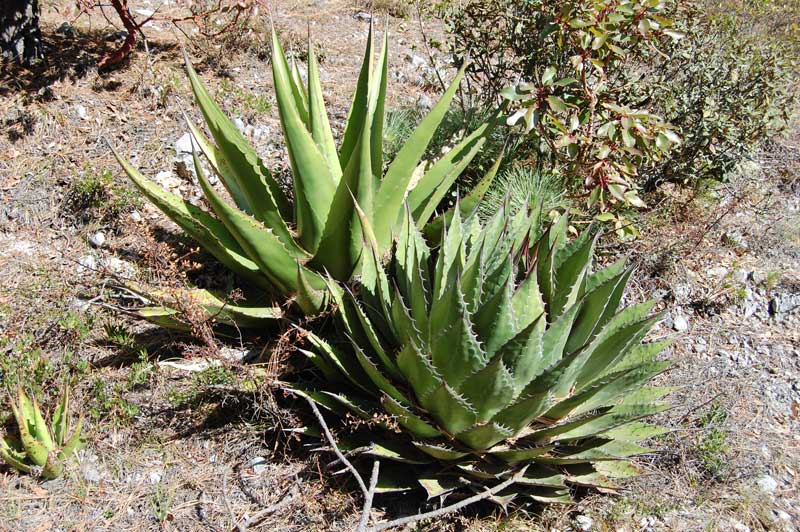
There aren't enough superlatives in the dictionary for this plant. Not only is it, for me, the most attractive of agaves it also has to be, by some magical quirk of nature, the most suitable for growing in England, the UK and much of the temperate world - these woodlands receive adequate moisture through the year, with mists drawing in regularly, and get extremely cold at night. A friend who knows this area well reckons -10°C would be fairly routine for winter, with lower spells some years. Yet here these huge beasts remain in pristine condition.
I make no apologies for the following sequence of photos that show this totally awesome plant in the wild, each one displaying it's own character yet so completely identifiable as Agave montana.
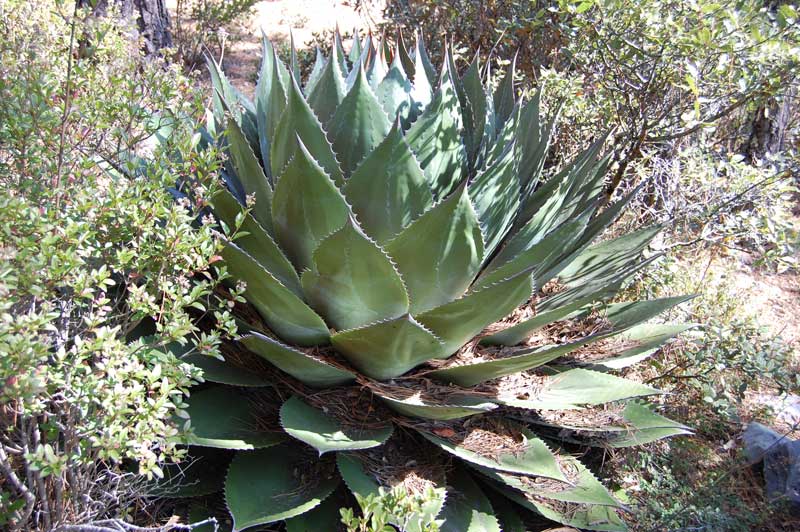
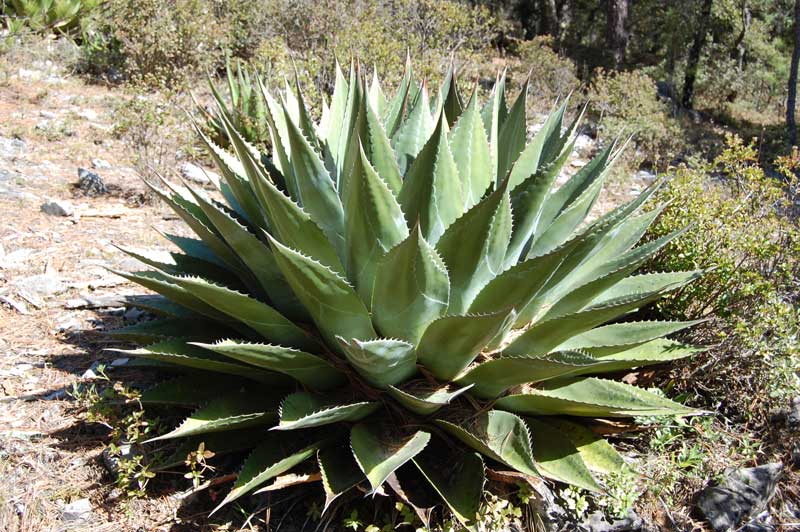
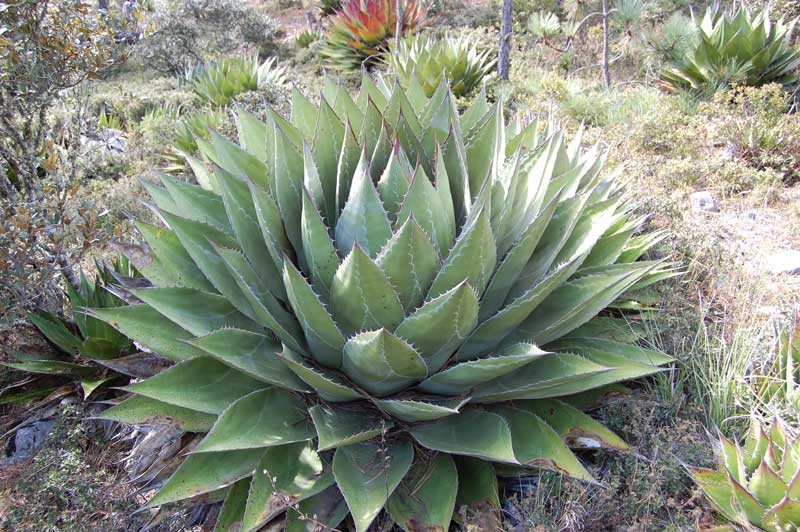
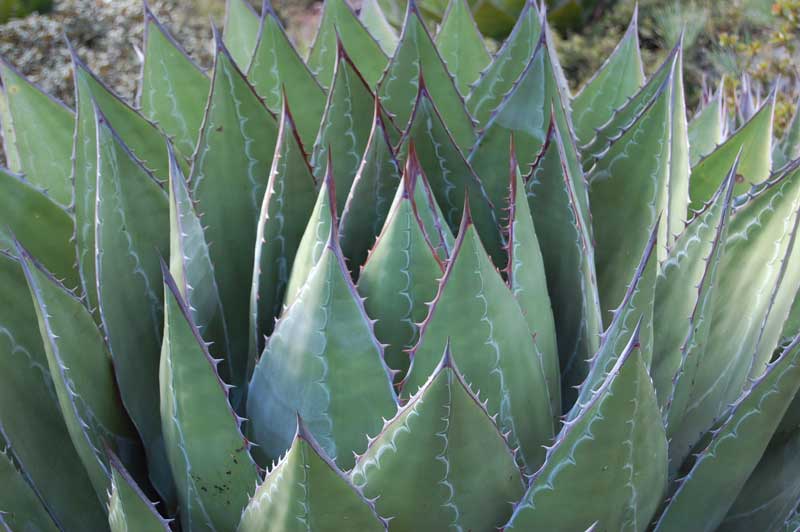
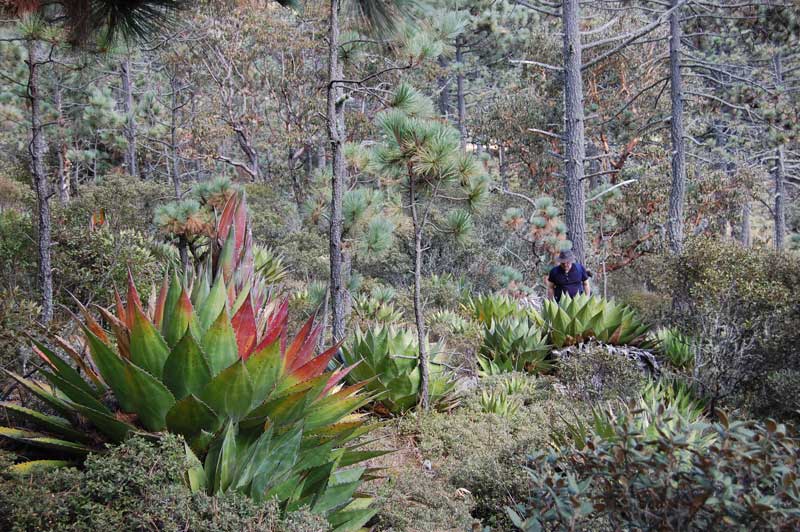
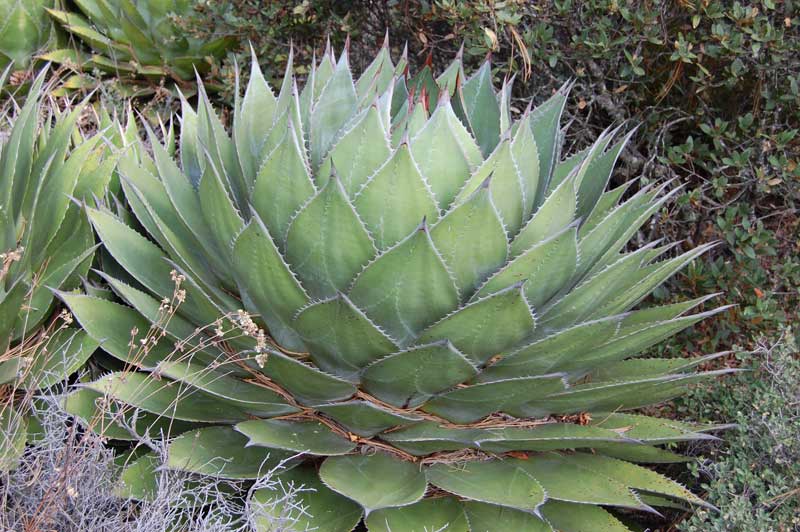
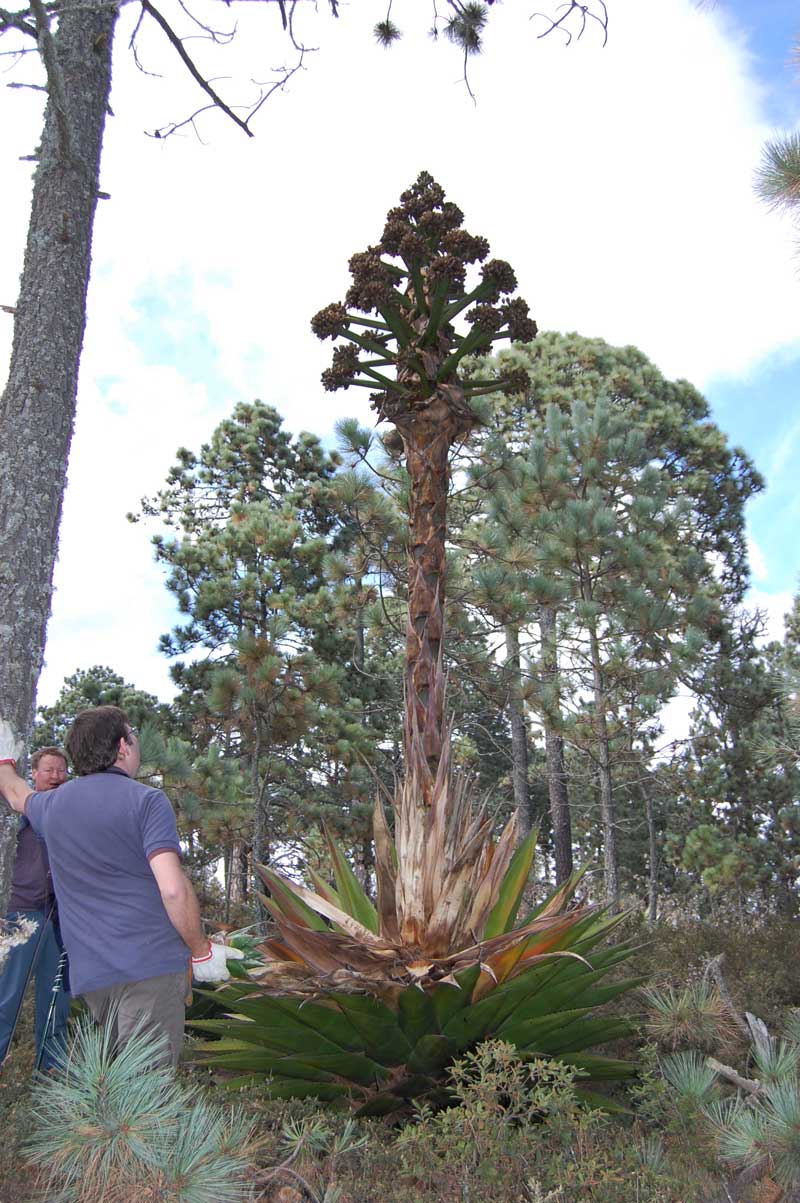
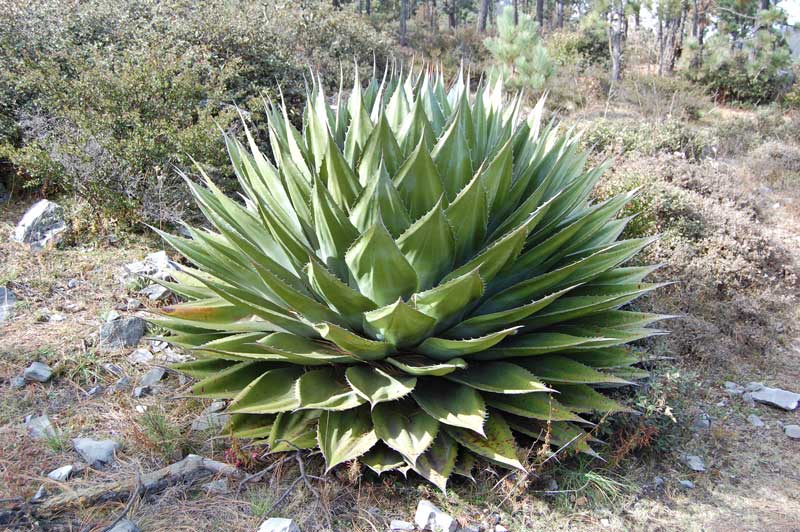
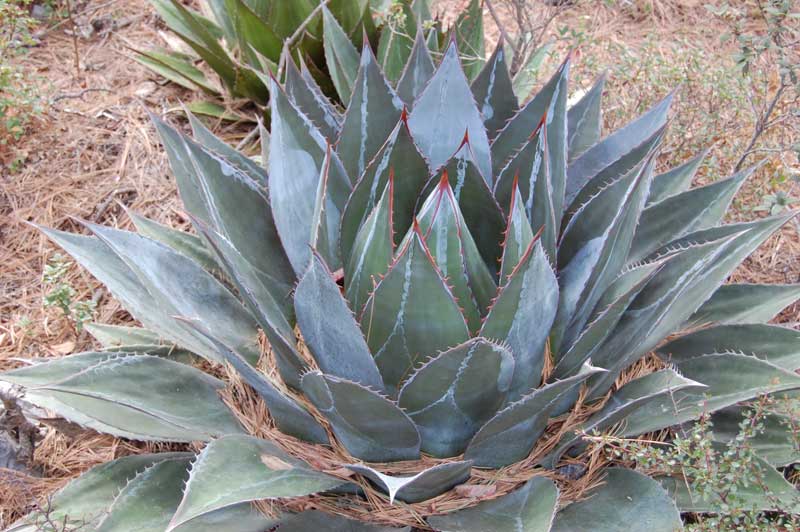
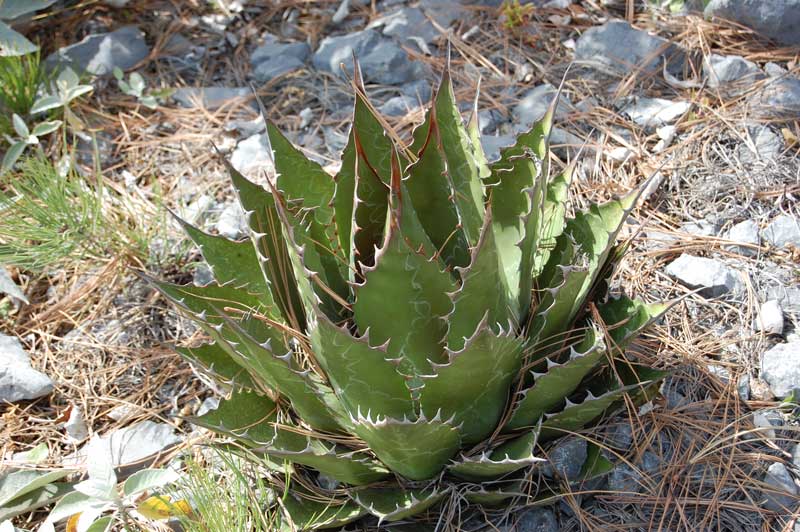
You would imagine that it was quite enough for a stretch of woodland to contain just one of the world's most beautiful plants. But not here - there are two. Also to be seen in some numbers, both in the woods and in open stretches, is the supremely elegant Nolina sp 'La Siberica' - as yet not formally described but quite distinct from anything else. For me, part of the attraction is the way the old leaves are held in that beautiful petticoat in such a way that the slight twist to the leaf terminal tuft is accentuated into an almost spiral pattern.
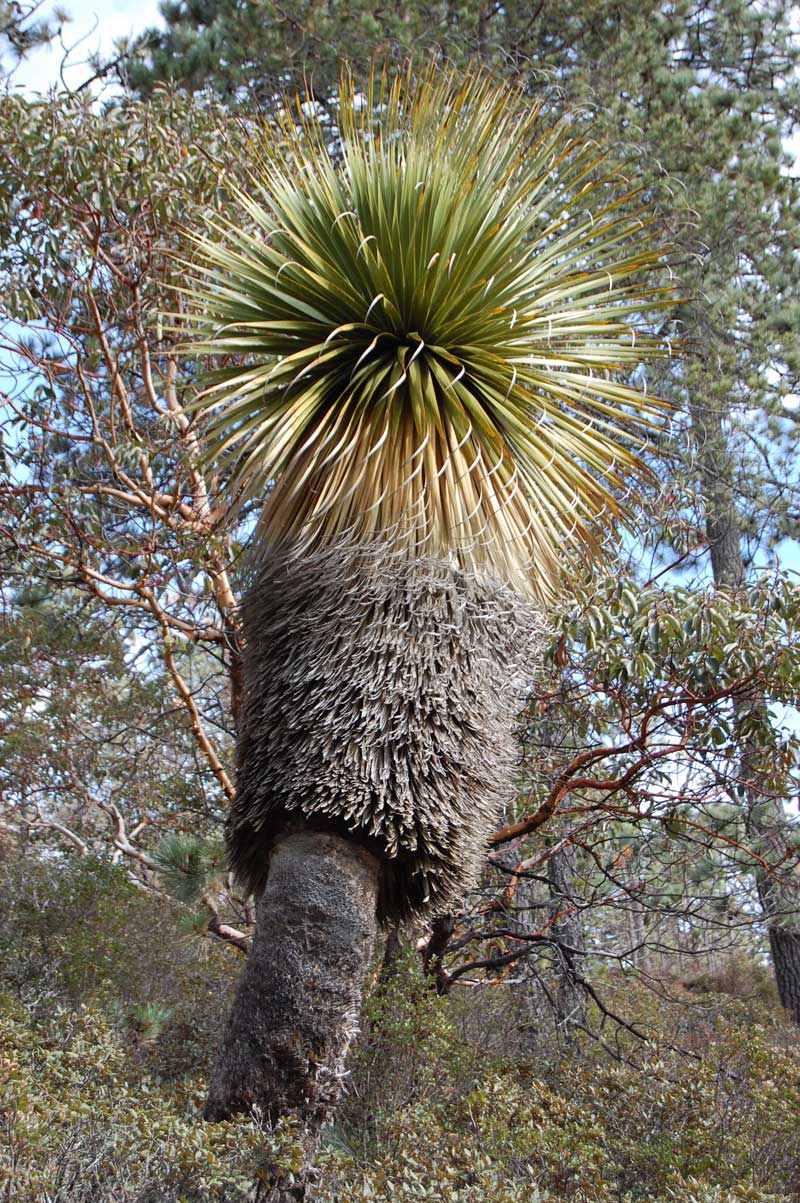
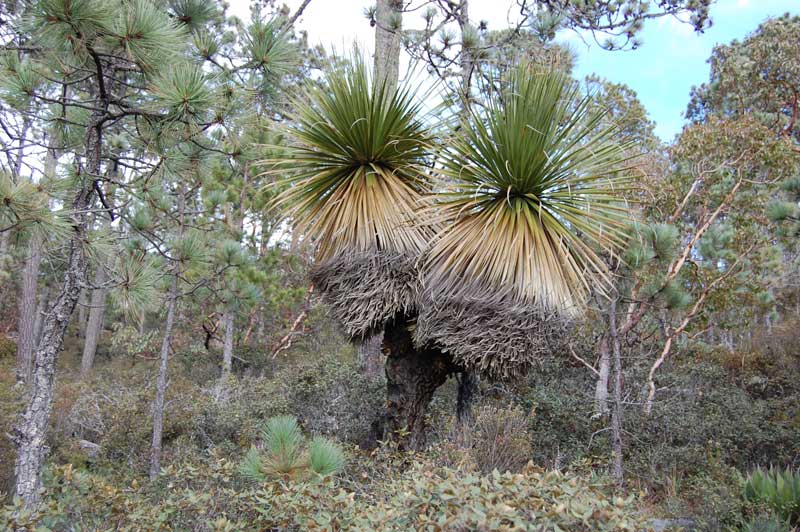
We drove to the top of the mountain, a fraction over 3000m, then down and around where the nolina grows in dense stands on the hillside:
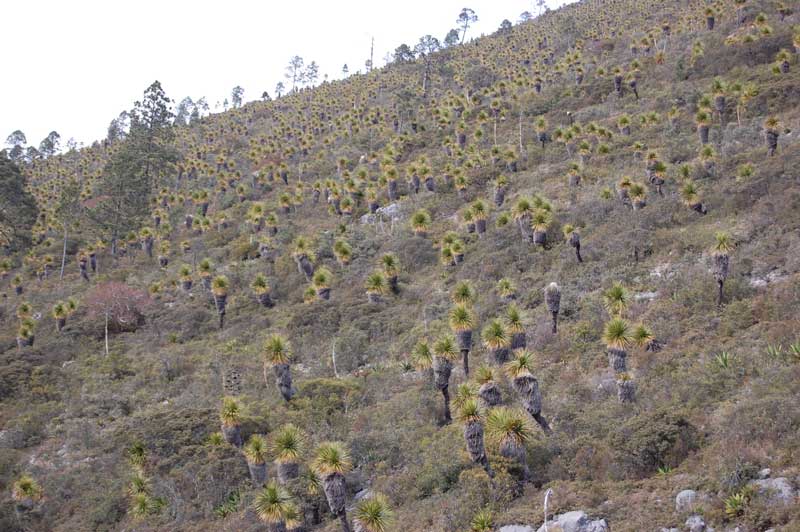
It cannot be emphasised enough how important these plants are for European succulent growers. Both the Agave montana and the Nolina 'La Siberica' are plants of the mountain tops, needing cool conditions, and not your usual desert plant. They only begin to appear once you have climbed to around 2400m or so, and continue, in some places beyond 3200m.
We finally continued down and around, where we again saw Agave gentryi, but in the open rather than the shade - repeating the pattern of growth we saw earlier in the trip (and just the other side of a large mountain)
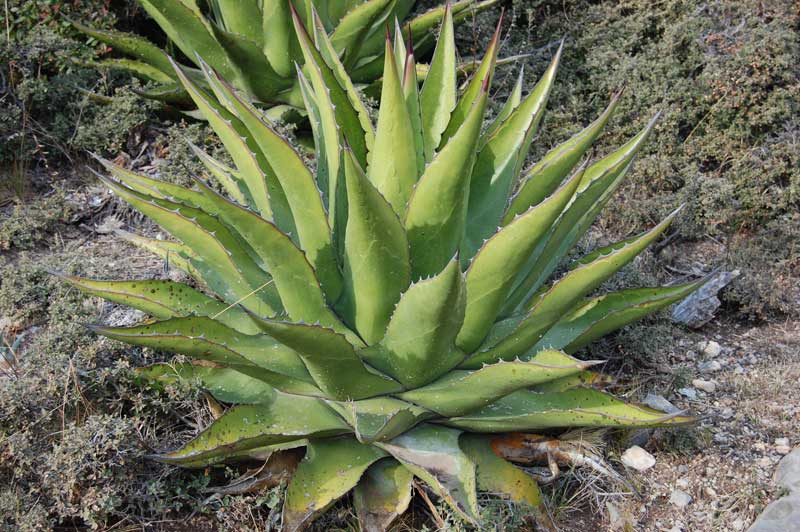
Time was getting short - it was already mid-afternoon and we had a few hours driving to get us back to the hotel in time for dinner, so we hardly took any of the thousand or so photo opportunities that were presented. But I guess we all promised to return and do this leg of the trip justice - a totally spectacular drive. First of all we crossed a vast flat plain, edged by mountain tops, hiding in the centre of the mountain range at around 2400m altitude. So completely peaceful and relaxing. Then we reached the rocky edge and carried on descending along bumpy, twisting mountain roads again where we were treated to the spectacle of hundreds of square km of yuccas and dasylirions. Each hillside appeared perfect, with Dasylirion miquihuanensis and D. quandrangulatum in their hundreds of thousands, yet each corner we turned revealed more. Below is D. miquihuanensis just before they started to get really numerous.
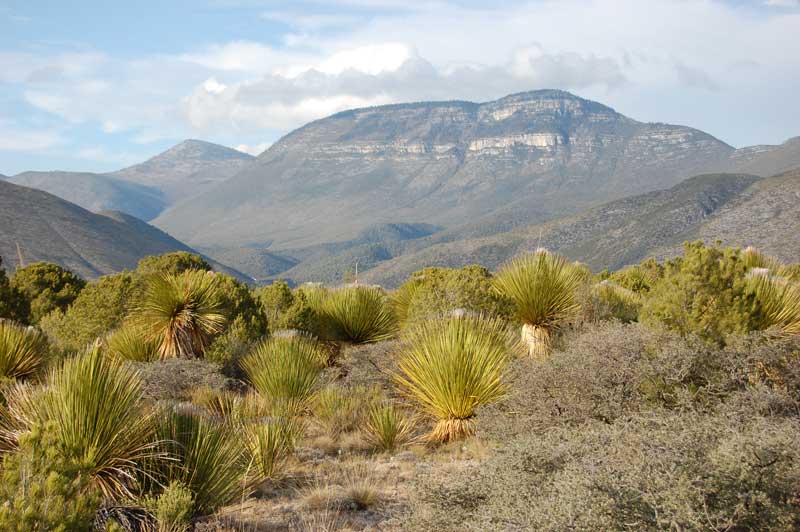
For me most incredible of all was driving through a vast forest of Yucca carnerosana that stretched for an area that must have been the size of south Essex - those distinctive trunks for as far as the eye could see, then again past the next hillside, then again... like driving east along the A13 from the Dartford tunnel and seeing nothing but yuccas all the way to Southend.
Anyway, we made it back for dinner, exhausted.
12th 13th 14th 15th 16th 17th 18th 19th 20th 21st 22nd 23rd 24th 25th 26th 27th